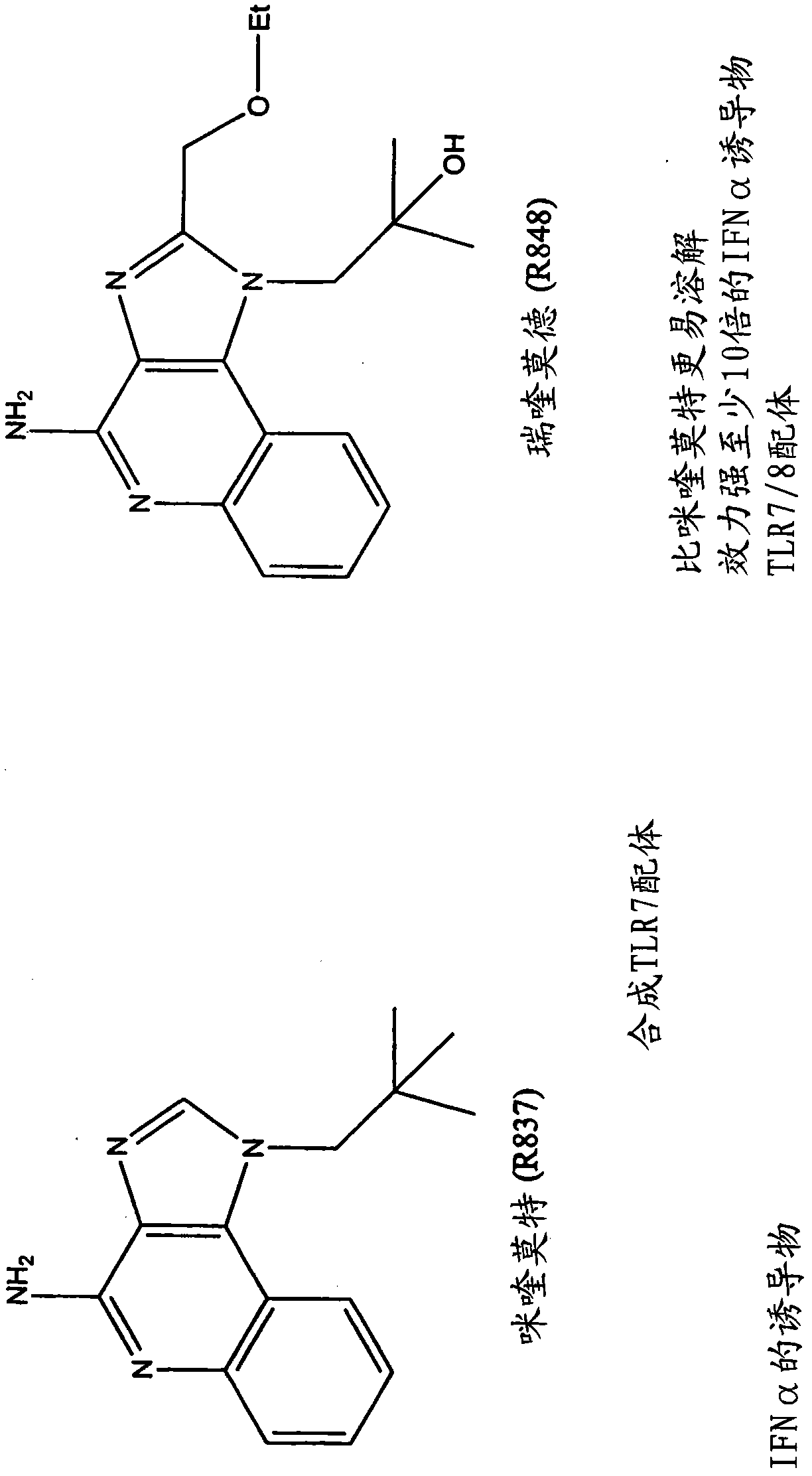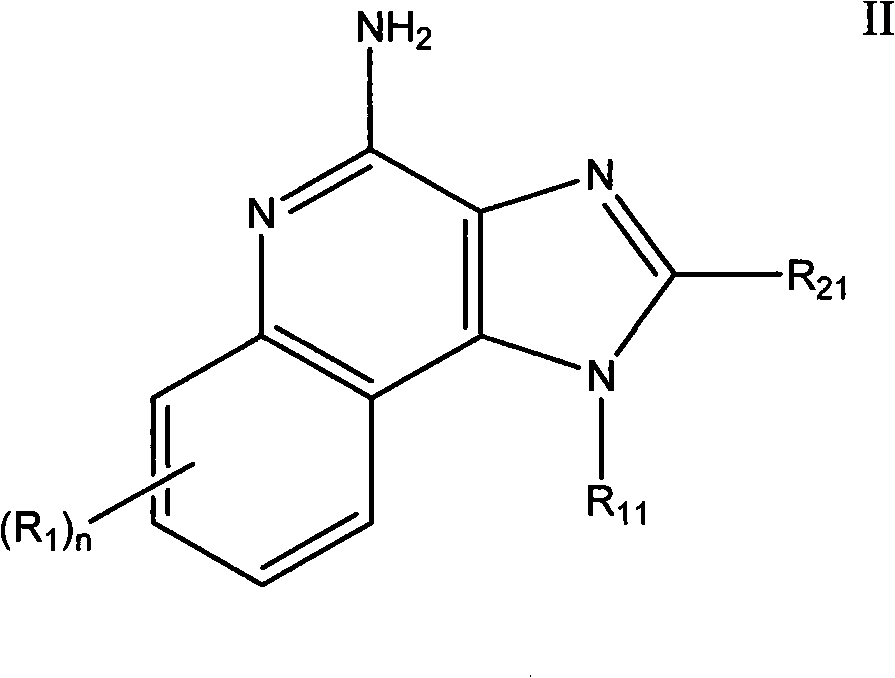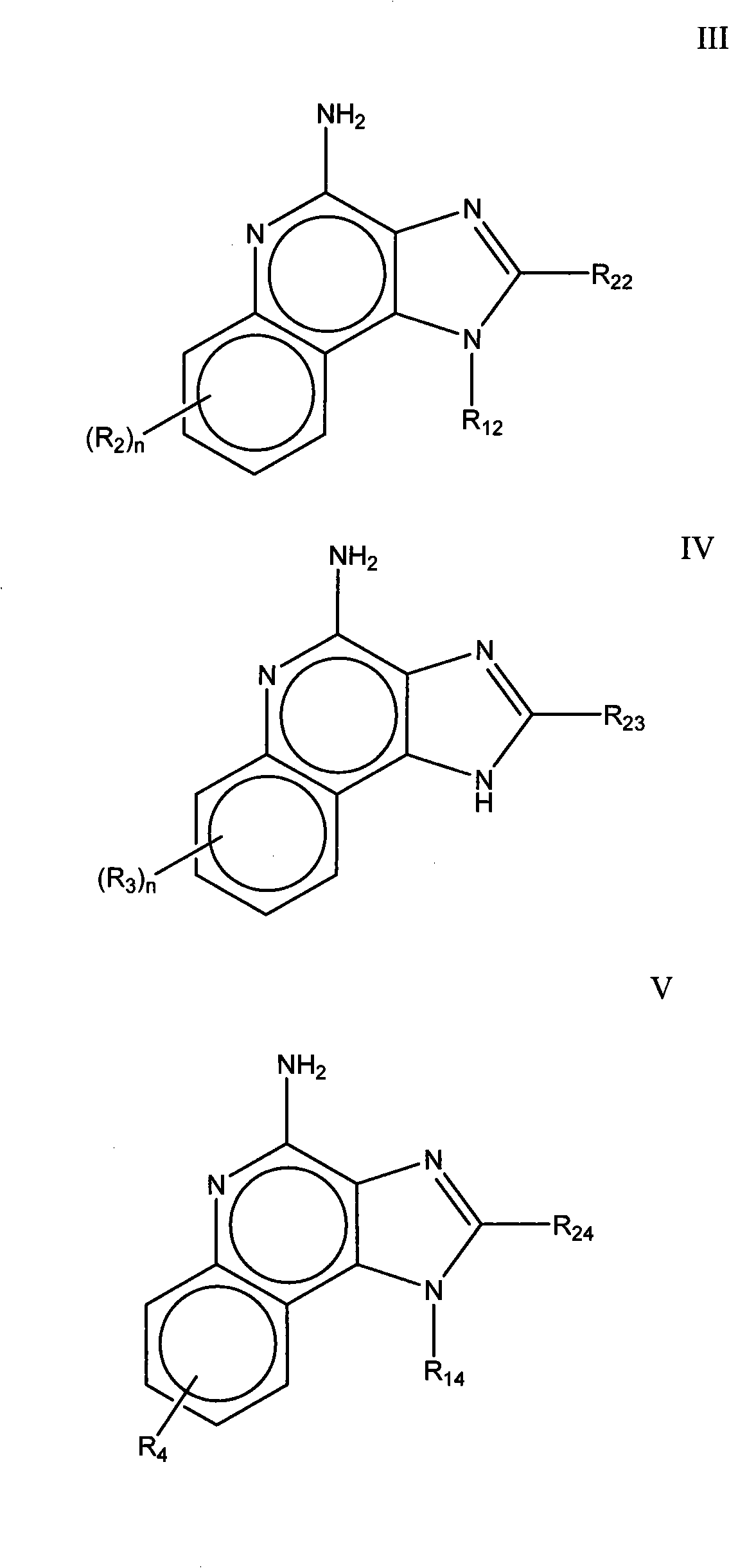Treatment of bladder diseases with a tlr7 activator
A technology for bladder and bladder cancer, applied in the field of treatment of bladder diseases with TLR7 activators, which can solve problems such as limitations
- Summary
- Abstract
- Description
- Claims
- Application Information
AI Technical Summary
Problems solved by technology
Method used
Image
Examples
Embodiment 1
[0179] Systemic delivery of TLR7 agonists is not ideal because it does not allow immune responses to occur in specific parts of the body. TLR7 agonists exhibit the highest activity when delivered locally, resulting in a strong immune gradient. Local delivery also reduces the risk of systemic exposure, thereby increasing the safety of the agonist. The bladder is a "skinned" immunocompetent organ with TLR7-expressing dendritic cells and mast cells. To achieve good clinical activity in bladder cancer patients, optimal passage of TLR7 agonists across the bladder permeability barrier is required. Excessive permeability can lead to systemic side effects, while low permeability can lead to incomplete treatment. TLR7 agonist conjugates, such as conjugates of imiquimod, can increase the uptake of the agonist by enhancing adhesion, endosomal uptake, and / or receptor multimerization (reducing monomer interactions), And can provide sustained drug release to increase the duration of acti...
PUM
 Login to View More
Login to View More Abstract
Description
Claims
Application Information
 Login to View More
Login to View More - R&D
- Intellectual Property
- Life Sciences
- Materials
- Tech Scout
- Unparalleled Data Quality
- Higher Quality Content
- 60% Fewer Hallucinations
Browse by: Latest US Patents, China's latest patents, Technical Efficacy Thesaurus, Application Domain, Technology Topic, Popular Technical Reports.
© 2025 PatSnap. All rights reserved.Legal|Privacy policy|Modern Slavery Act Transparency Statement|Sitemap|About US| Contact US: help@patsnap.com



